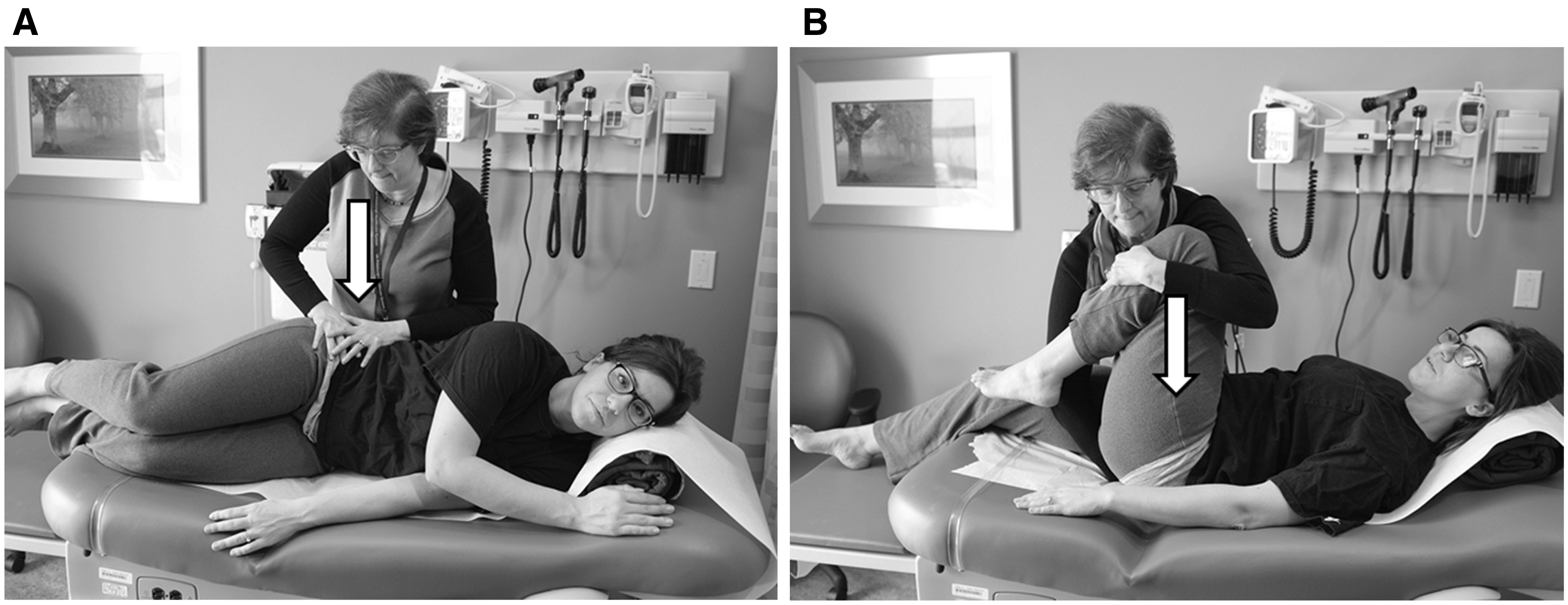Figure 2
(A) Compression test. The patient lies on the unaffected side with hips and knees flexed to approximately 90 degrees. The examiner, positioned above the patient, applies a force vertically downward on the uppermost iliac crest. (B) Thigh thrust. The patient lies supine with the hip and knee flexed with the thigh perpendicular to the exam table. One of the examiner’s hands cups the sacral base and the other arm and hand wraps around the flexed knee to apply pressure in the anterior to posterior direction along the long axis of the femur. It is frequently helpful for the examiner to be positioned above the subject to maximize the applied force.
